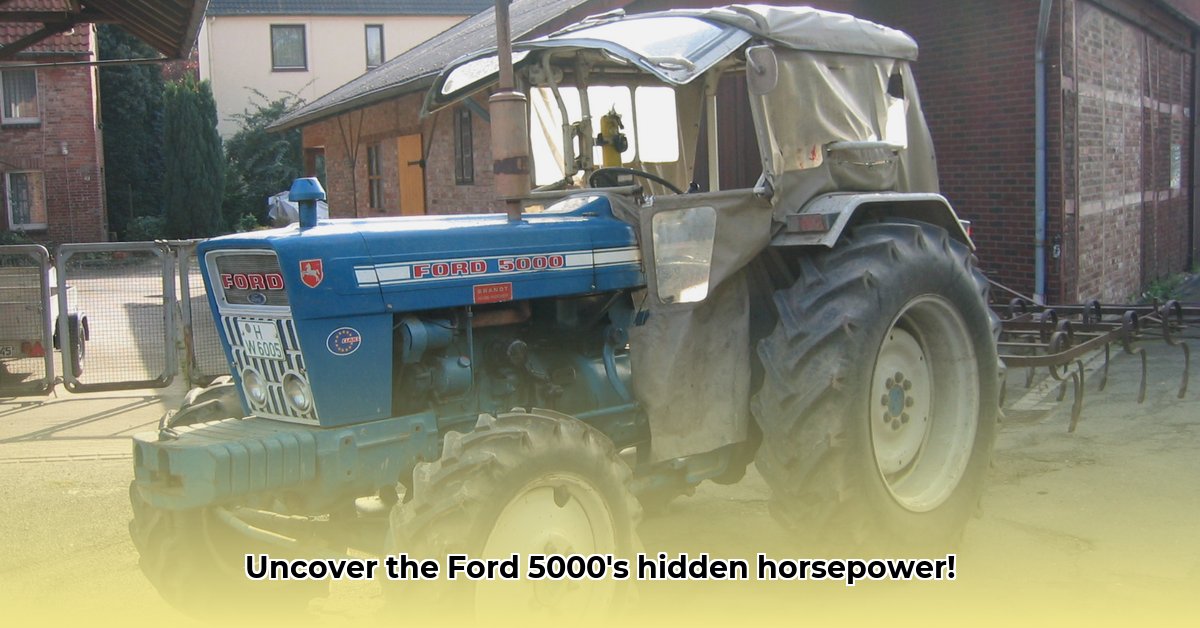
The Ford 5000 tractor, a stalwart of agricultural history, continues to command respect and intrigue. However, pinpointing its exact horsepower can be surprisingly complex. This guide delves into the specifics of this iconic machine, clarifying discrepancies and providing valuable information for collectors, historians, and mechanics alike. We cover everything from production history and engine specifications to transmission options and historical context, offering actionable insights for a thorough understanding of this agricultural workhorse. For detailed parts diagrams, check out this helpful resource: Ford 5000 parts.
Production History and Variants
The Ford 5000, manufactured in Highland Park, Michigan, from 1965 to 1976, wasn't a single model. Two primary variants existed: the 5100 and the 5200. These weren't mere cosmetic differences; functional design choices significantly impacted their capabilities and suitability for various farming tasks. The 5100, with its longer wheelbase, excelled in general-purpose work and pulling heavy implements. Conversely, the 5200's shorter wheelbase enhanced maneuverability, making it ideal for row-crop cultivation. This distinction highlights the tractor's adaptability to diverse agricultural needs. Was this adaptability a key factor in its lasting impact on farming practices?
Engine Specifications and Discrepancies
Determining the precise horsepower of the Ford 5000 presents a minor challenge. Sources cite figures ranging from 67.3 hp to 69 hp. These discrepancies likely stem from various factors, such as differing testing methodologies employed decades ago, variations in rounding practices, or minor engine differences across the extensive production run. Regardless of these minor variations, the Ford 5000 undeniably possessed a powerful engine capable of operating on gasoline or diesel fuel.
Transmission Options
Transmission options significantly contributed to the Ford 5000's versatility. Depending on the year and model, tractors featured 8, 10, or 16-speed transmissions. This range of gear ratios provided farmers with exceptional control and efficiency across diverse tasks, from plowing fields to hauling heavy loads. How did this wide array of gear ratios influence the overall efficiency of the Ford 5000 compared to its competitors?
Other Key Specifications
Beyond horsepower and transmission, several other specifications defined the Ford 5000's capabilities:
| Specification | Description | 5100 vs. 5200 |
|---|---|---|
| Engine | 4.2L, four-cylinder (gasoline or diesel) | Minor variations may exist across production. |
| Brakes | Wet disc brakes | System largely consistent across models. |
| Steering | Mechanical (5100), Hydrostatic Power (5200) | A key difference; 5200 offered easier row-crop steering. |
| Wheelbase (5100) | Longer, general-purpose tasks | Greater stability for heavier loads, less precise maneuvering. |
| Wheelbase (5200) | Shorter, optimized for row-crop maneuverability | Enhanced agility and tighter turning radius. |
Historical Context and Significance
The Ford 5000 debuted in 1965 with an approximate price of $5,400 (in 1967 dollars). This substantial investment reflected its advanced engineering and the rising cost of agricultural machinery. The tractor significantly advanced Ford's standing in the farm equipment market and played a crucial role in improving agricultural efficiency.
Actionable Insights
The information presented here offers numerous benefits:
- Collectors: Precise serial number identification is crucial for authenticating tractors and sourcing accurate parts, ensuring accurate restoration efforts.
- Historians: Production data and sales figures provide insights into agricultural technology evolution and broader economic trends.
- Parts Suppliers: Understanding part demand patterns informs optimal inventory management and production planning.
Conclusion
The Ford 5000 remains a pivotal machine in agricultural history. While minor discrepancies surrounding horsepower exist, this guide clarifies various specifications and highlights the tractor's lasting legacy. Its versatility, power, and enduring appeal make it a worthy subject of continued study and appreciation. The tractor's impact isn't just about raw horsepower; it's about efficiency, adaptability, and the enduring legacy of a true agricultural workhorse.